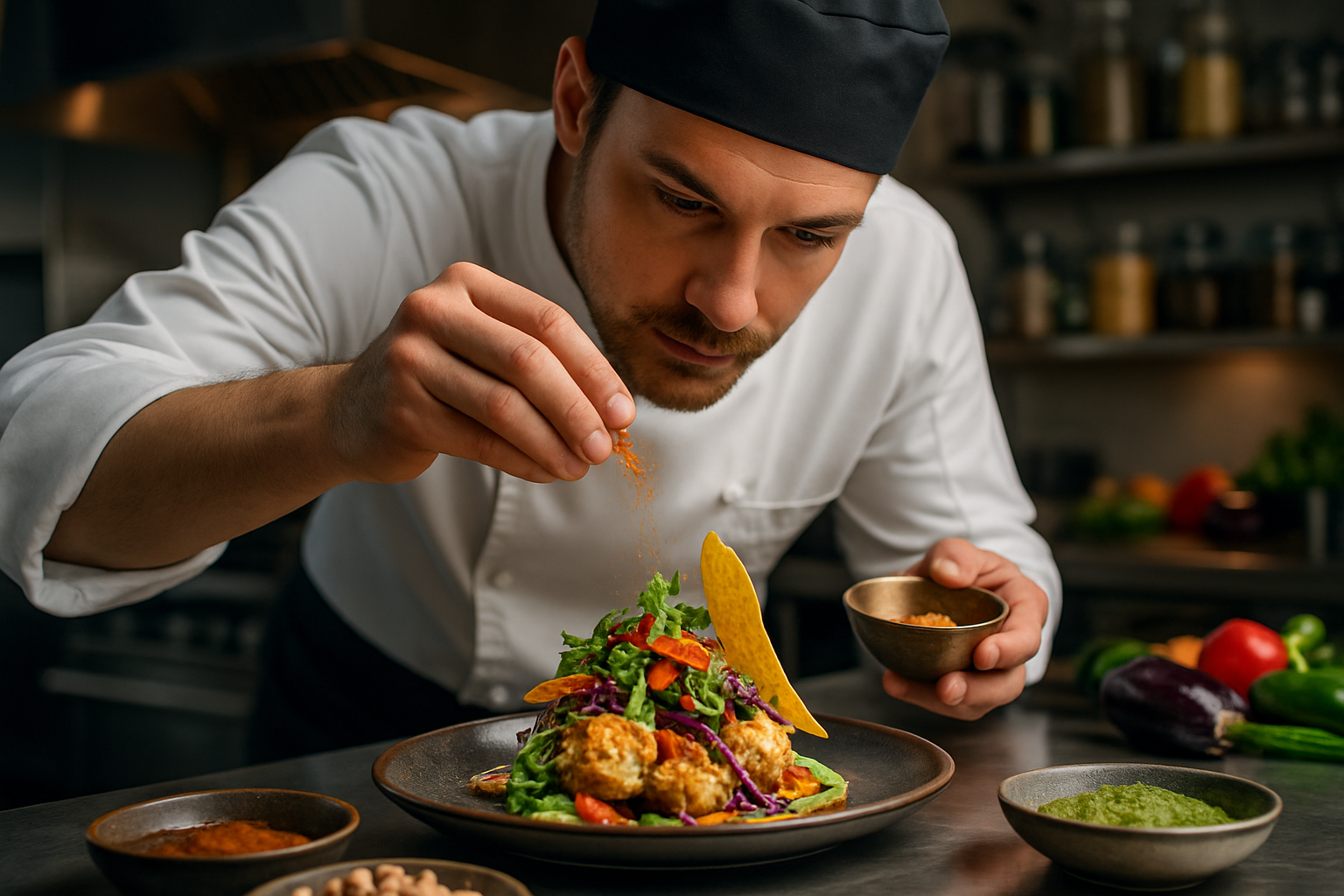Flavor Fusion: Exploring the Culinary Magic of Tea-Infused Cuisine
Embark on a tantalizing journey where the delicate notes of tea meet the bold flavors of global cuisine. This innovative culinary trend is transforming kitchens worldwide, offering a fresh twist on familiar dishes and introducing exciting new taste combinations. From savory entrées to decadent desserts, tea-infused cooking is opening up a world of possibilities for food enthusiasts and professional chefs alike.

From Appetizers to Desserts: Tea’s Culinary Journey
Tea’s versatility shines across all courses of a meal. For appetizers, consider a delicate green tea-infused vinaigrette drizzled over a fresh spring salad, or Earl Grey-cured salmon served on crisp crostini. Main courses can feature tea-rubbed meats, like a chai-spiced pork loin or a lapsang souchong smoked chicken. Vegetarian options abound as well, with dishes like matcha risotto or oolong-infused mushroom stir-fry. Desserts offer perhaps the most exciting playground for tea infusion. Imagine a velvety Earl Grey crème brûlée, a refreshing jasmine tea sorbet, or a decadent dark chocolate tart infused with smoky pu-erh tea. The possibilities are endless, limited only by the chef’s imagination and the vast array of teas available.
Global Inspirations: Tea-Infused Cuisine Around the World
While tea has been a staple in cooking in some cultures for centuries, its global adoption as a culinary ingredient is relatively recent. In China, tea eggs have long been a popular snack, with eggs steeped in a mixture of tea and spices. Japanese cuisine incorporates matcha into everything from traditional wagashi sweets to modern fusion dishes. In the West, chefs are drawing inspiration from these traditions and creating their own interpretations. British chefs are reinventing classic dishes with tea, like Earl Grey-infused shortbread or English breakfast tea-smoked salmon. In the United States, innovative restaurants are featuring tea cocktails and tea-based sauces, pushing the boundaries of what’s possible with this versatile ingredient.
The Science Behind the Flavor: Tea’s Culinary Chemistry
The magic of tea-infused cuisine isn’t just in its flavor; there’s fascinating science at play. Tea leaves contain a complex array of compounds, including polyphenols, amino acids, and volatile oils, each contributing to the overall taste profile. When tea is incorporated into cooking, these compounds interact with other ingredients in unique ways. For example, the tannins in black tea can help tenderize meat, making it an excellent addition to marinades. The antioxidants in green tea can help preserve the color of fruits and vegetables in salads. Understanding these chemical interactions allows chefs to create not only flavorful but also visually appealing and texturally interesting dishes.
Brewing Up Innovation: The Future of Tea in Cuisine
As the culinary world continues to embrace tea-infused cuisine, we’re seeing exciting innovations on the horizon. Chefs are experimenting with rare and exotic teas, like silver needle white tea or aged pu-erh, to create truly unique flavor profiles. There’s also a growing interest in tea-pairing menus, similar to wine pairings, where each course is complemented by a specific tea. Some forward-thinking restaurants are even incorporating tea sommeliers into their staff to guide diners through these experiences. As sustainability becomes increasingly important in the culinary world, chefs are finding creative ways to use spent tea leaves, reducing waste and adding interesting textures to dishes.
Tea-rrific Tips for Culinary Exploration
• Start with familiar teas and gradually experiment with more exotic varieties
• Use loose leaf tea for better flavor control in cooking
• Remember that different teas require different steeping times and temperatures
• Consider the tannin content of teas when pairing with proteins
• Experiment with tea in unexpected places, like spice rubs or cocktail bitters
• Don’t overlook cold-brew teas for refreshing summer dishes
In conclusion, tea-infused cuisine represents a thrilling frontier in the culinary world. It offers a way to elevate familiar dishes, create entirely new flavor combinations, and challenge our perceptions of what’s possible in the kitchen. As more chefs and home cooks discover the potential of tea as an ingredient, we can expect to see even more innovative and delicious creations. So, the next time you’re looking to add a unique twist to your cooking, consider reaching for the tea leaves – you might just brew up something extraordinary.





